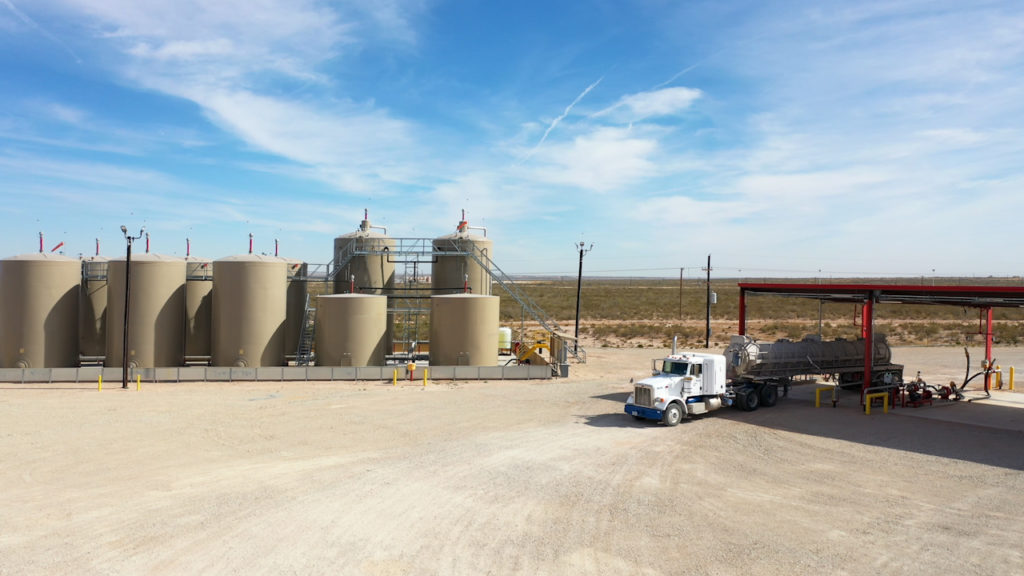In the Permian Basin, now the most prolific oil field in the world, hundreds of miles of plastic pipelines snake along dirt roads, drilling pads and the edges of farm fields. But they are not carrying oil. Instead, they’re transporting an equally precious commodity in this arid region straddling the New Mexico-Texas border: water.
“Pipelines are going in everywhere,” said Jim Davis as he drove a camouflage-hued, four-wheeled ATV across his land toward the water station he owns. Selling the water beneath his property to oil and gas companies has given Davis and his wife, who has cancer, a financial security that eluded them for most of their lives. Every day, a steady stream of water trucks flows in and out of his station south of Carlsbad, filling up on his high-quality freshwater — an essential ingredient for hydraulic fracturing, or fracking for short.
Davis, whose property has been in his family since 1953, says he’s never seen so much water moving around the basin. “There’s no way you can even keep up with what’s going on,” he said.
Without water, there would be no oil and gas boom. Fracking, the most common drilling method in the basin, pumps massive amounts of freshwater — along with sand and chemicals — into shale formations as deep as 10,000 feet, or nearly two miles underground. The fluid cracks open the rock, releasing the oil trapped inside. When the oil gushes to the surface, some of the water and chemicals come up too, along with briny water that occurs naturally in the rock layers — the vestige of an ancient sea.
For every barrel of oil produced in the Permian, about four barrels of this “produced water” come out of the earth along with it. In 2018 alone, New Mexico’s share of the Permian Basin generated 42 billion gallons of oil and gas wastewater, according to the New Mexico Environment Department. By April Reese, High Country News
